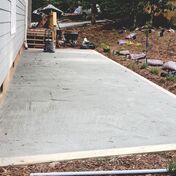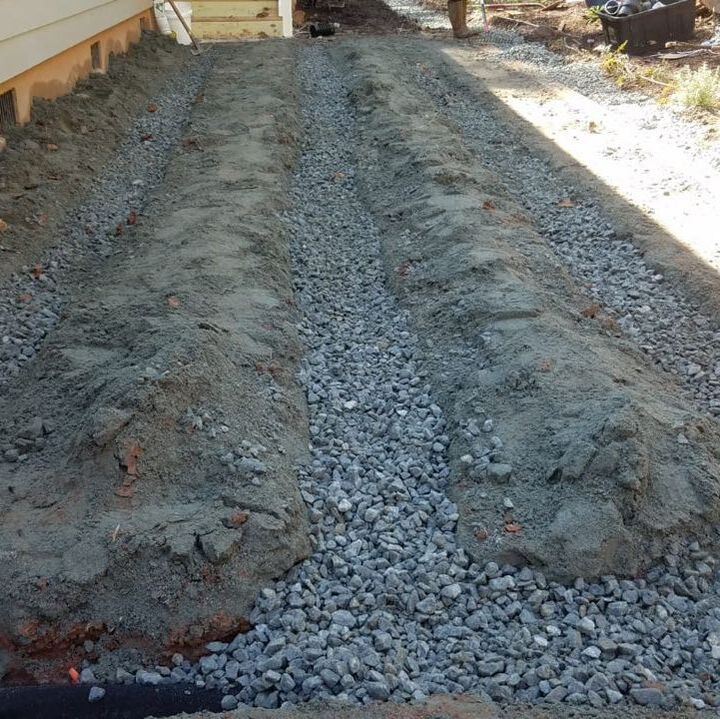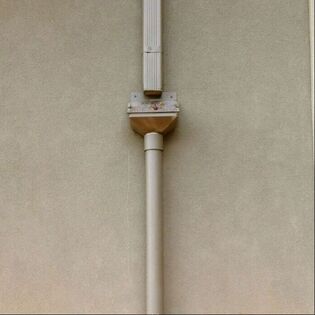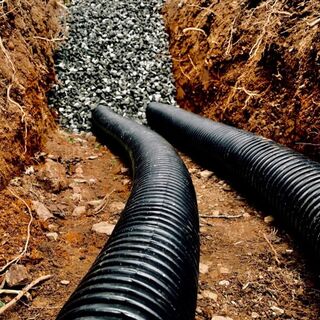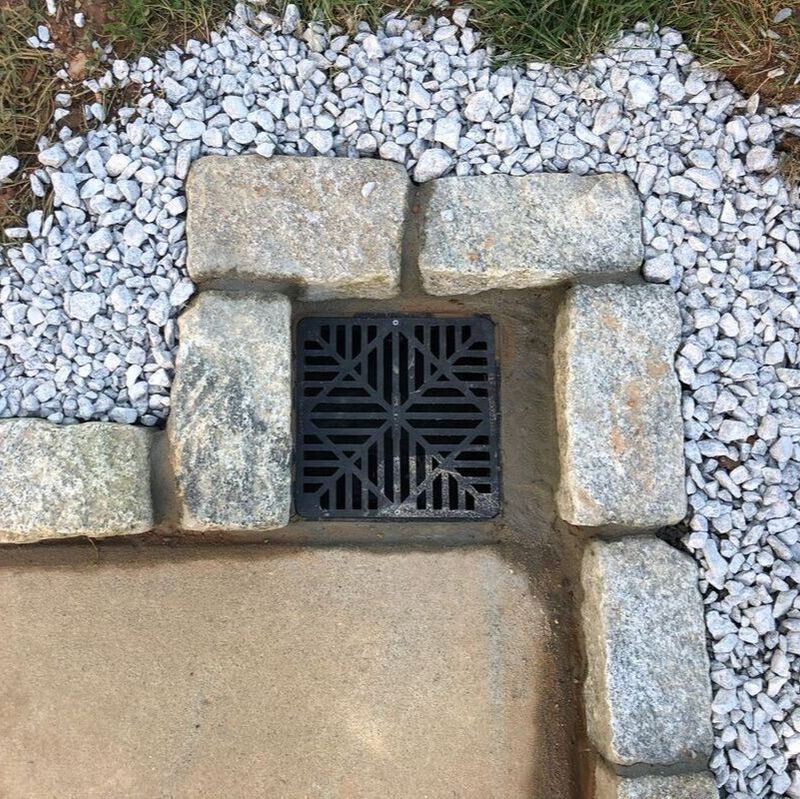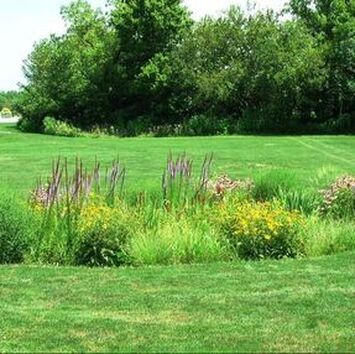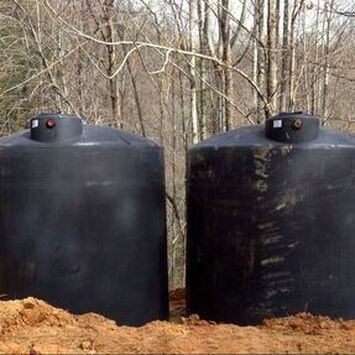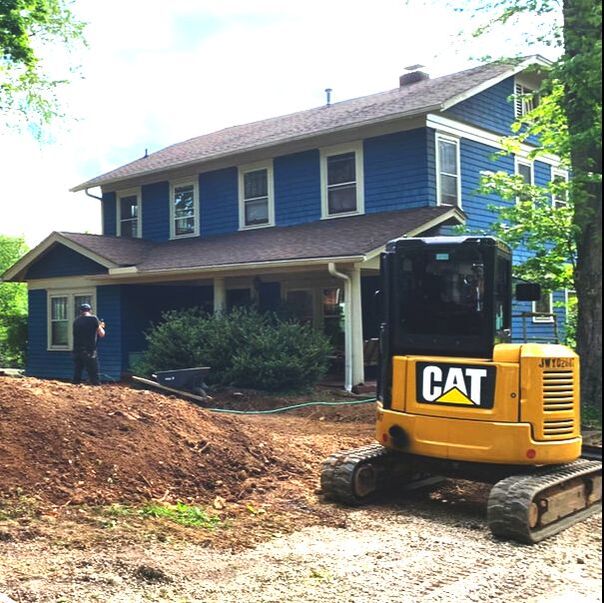Drainage Problems and Solutions
Water is a resource, unless it is a liability. With the local weather patterns we have in WNC, compounded by the developing reality of climate change, we have seen an increasing amount of drainage problems in our clients homes in the past 5 years.
|
|
Downspout Drains
Getting water away from your house is very important, so we commonly add downspout drains with downspout filters on them. The drains are buried pipes that take water away from the foundation, and bring it to a rain garden or some other place where it can be useful. Downspout filters are important because they stop leaves and other debris from getting into your pipes and clogging them up. 80% of the time that we see downspout drains without filters during site evaluations, they are clogged.
|
French Drains
French drains are a good way of capturing slow seeps of water into pipes, and draining soggy areas in yards. However, they are vastly over-prescribed, undersized, and often installed in areas where they create more damage than they resolve. On our jobs, we often cover existing french drains with an impermeable layer of clay, because often times positive drainage away from a structure is a better solution. Our technicians know when and where to install french drains so that they work for the long term.
|
Yard Drains/Catch Basins
Yard drains, or catch basins, are useful to get standing water from soggy or low places in your landscape and in hardscapes into a pipe and draining to a place where the water becomes a resource instead of a liability. Sometimes these are used in combination with grading in order to create the places where the water drains to.
|
Rain Gardens
Rain gardens are low spots in your yard where you direct and concentrate runoff from your roof or other areas of the yard. In a rain garden, water has time to infiltrate into the soil, where it stores thousands of gallons of water and makes that water available to trees and bushes though out the year. Rain gardens are often planted with appropriate pollinator support plants and native meadow plants, and they become rich, sustainable landscape features.
|
Rain Harvesting CisternsCisterns are great ways to store water that can later be used for landscape irrigation or for annual vegetable gardens, for establishing young landscape plants, for other outdoor uses such as filling ponds, washing cars, or water fights. Rain water can also be used for indoor uses, such is indoor non-potable for flushing toilets and washing laundry, or indoor potable for all other indoor water uses.
|
Minor Grading Work
For drainage purposes, often times all that is necessary is some minor grading work to reshape flows of water on land, filling low spots, taking down high spots, and ensuring that there is positive drainage away from structures. We often phase in installations, trying less expensive options first, such as grading, before attempting much more costly interventions such as total foundation drains, and most of the time, no further work is needed.
|
Our process
Site-assessment
|
The first step in the process of working with us is to have a site assessment. We will come to your property and meet with you and discuss any issues that you're having and do any assessment and investigation at that meeting that we can. We find that your experience and observations of the drainage issues are often very helpful in determining the cause. From there, often times, we can directly come up with a plan that we think will work, and if this is the case, we can go straight to the written proposal. Sometimes, though, additional analysis is required in order to be able to come up with a solid plan, and when this is the case, we usually recommend a watershed analysis, and less frequently, exploratory digging
We don't have a single solution that we implement every time, rather, we design a custom drainage plan for each situation.
We don't have a single solution that we implement every time, rather, we design a custom drainage plan for each situation.
Design/watershed analysis
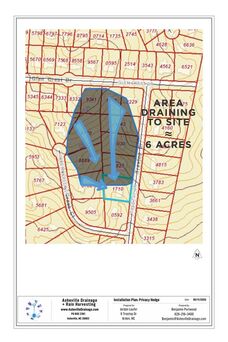
Sometimes with drainage issues it is not readily apparent where the water is coming from. Other times, we know exactly where it is coming from, but we don't know how much of it there is. In situations like these, we recommend additional design and watershed analysis. During this process, we use digital and topographical maps, as well as old-fashioned rubber-footing it to determine how much water is flowing towards your site. Once this and any additional investigation has been performed, we will make a recommendation for a drainage strategy and provide a proposal for the work.
We love this process. We approach each drainage problem as detectives on an investigation, figuring out where the water is coming from, and how to best intercept that water and make it go somewhere that we want it to go, using a variety of different techniques.
We often look for a number of small, leveraged interventions, instead of one, big and expensive intervention. This allows us to solve drainage problems for a lot less than other companies. Sometimes, you don't have to deal with 100% of the water to make the problem go away. Sometimes, if you catch and divert 50% of the water, that is enough to solve the problem.
We love this process. We approach each drainage problem as detectives on an investigation, figuring out where the water is coming from, and how to best intercept that water and make it go somewhere that we want it to go, using a variety of different techniques.
We often look for a number of small, leveraged interventions, instead of one, big and expensive intervention. This allows us to solve drainage problems for a lot less than other companies. Sometimes, you don't have to deal with 100% of the water to make the problem go away. Sometimes, if you catch and divert 50% of the water, that is enough to solve the problem.
Proposal - Bid price v. Estimate/Time and Materials
Once we have a plan, we will create proposal in order to let you know how much the project is going to cost. We typically work with bid price proposals, because we find it to be easier and more honest of a way to do business. We tell you a price and you agree to it, and that is the price you pay. Many drainage companies will submit unrealistically low estimates in order to get the job, and then proceed to invoice double or more of the amount after the job has been completed.
For example, we bid 30k for a retaining wall and lost the job to someone who estimated 15k for the job. We told the client that just our materials costs for the job were higher than 15k, but in order to save money, decided to go with that builder. 3 months later, she called and told us that she had ended up paying over 40k for the same retaining wall. If she had done it with us, she would have paid 10k. This is one of the reasons that we use bid prices instead of estimates.
For example, we bid 30k for a retaining wall and lost the job to someone who estimated 15k for the job. We told the client that just our materials costs for the job were higher than 15k, but in order to save money, decided to go with that builder. 3 months later, she called and told us that she had ended up paying over 40k for the same retaining wall. If she had done it with us, she would have paid 10k. This is one of the reasons that we use bid prices instead of estimates.
Installation
Install is our favorite part of the job. It is when we put the plan into action. We only install one project at a time, and completely finish that project before moving onto the next project. Most of our installations on a residential scale take less than 2 weeks, and many take just a few days.
Sometimes during installations, once we begin to dig, we find evidence of something that causes us reassess and modify our plan. When this happens, we let you know as soon as possible and keep you updated as to the jobs progress daily.
Sometimes during installations, once we begin to dig, we find evidence of something that causes us reassess and modify our plan. When this happens, we let you know as soon as possible and keep you updated as to the jobs progress daily.
Barnardsville, NC
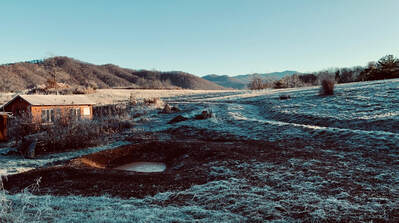 A terrace swale in Barnardsville, NC works as rainwater catchement for future orchard, access, and diverts water that previously flowed towards the house to a small rain-fed pond and pollinator-support bioswale.
A terrace swale in Barnardsville, NC works as rainwater catchement for future orchard, access, and diverts water that previously flowed towards the house to a small rain-fed pond and pollinator-support bioswale.
This client had water rushing down towards their house from a pasture every time it rained, and it left their backyard soggy and with puddles of water. We increased their access, passive infiltration, and diversion capabilities by installing this terrace/road/swale that also feeds a small, rain-filled pond. The terrace fills with water, functioning as a retention swale, and then overflows to a diversion swale, which conveys the water to the rain fed pond. It works.

